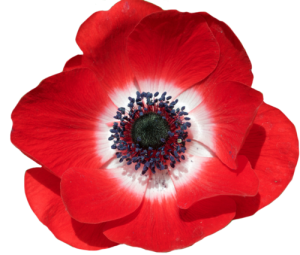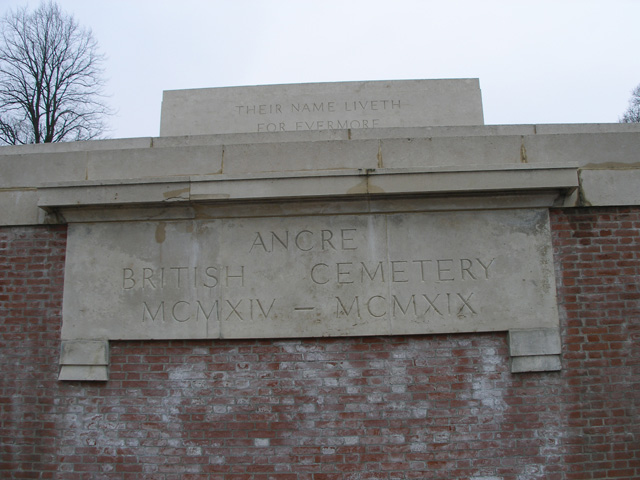Personal Details
Jack Hainsworth Maxwell Newall was born in Huyton, near Liverpool, Lancashire on 1st October 1895, the only son of Marian Perrin Knight Newall of Wharton Hall, Winsford, Cheshire and the late William Newall Maxwell Newall.
Jack was educated at Charterhouse School, going up to Trinity College Cambridge from where he enlisted in the Royal Naval Volunteer Reserve as an Able Seaman. He is commemorated on the rolls of honour at both these educational institutions.
Jack is also commemorated in St James the Great Church, Audlem, the home of his maternal grandparents and Christ Church Wharton, Winsford, Cheshire (a memorial was placed in the organ frieze; his mother donated the organ to the church. The organ has now been removed but the frieze and memorial remain). There is also a recorded grave for Jack in the Dalry Parish Church graveyard, Dumfries and Galloway; it is possible that this was purchased but never used as there is no headstone. He is also commemorated on the rolls of honour for Charterhouse School and Trinity College, Cambridge.
His medals are displayed in Christ Church Wharton, Winsford, Cheshire.
We can find no link between Jack and Marbury, so why he is commemorated on the memorial in Marbury Church must remain a mystery.
Military Details
Regiment : Drake Battalion, Royal Naval Division, Royal Naval Volunteer Reserve
Rank : Sub Lieutenant
Service Number : Z/1779 (when Able Seaman)
Killed in Action; France 13 November 1916 Aged 21
Jack was awarded the Campaign Medals (1914/15 Star, British War Medal and Allied Victory Medal).

The 1914 Star (also known as 'Pip') was authorised under Special Army Order no. 350 in November 1917 and by an Admiralty Fleet Order in 1918, for award to officers and men of the British and Indian Expeditionary Forces who served in France or Belgium between 5 August and midnight of 22–23 November 1914. The former date is the day after Britain's declaration of war against the Central Powers, and the closing date marks the end of the First Battle of Ypres.
The 1914–15 Star (also known as 'Pip') was instituted in December 1918 and was awarded to officers and men of British and Imperial forces who served against the Central European Powers in any theatre of the Great War between 5 August 1914 and 31 December 1915. The period of eligibility was prior to the introduction of the Military Service Act 1916, which instituted conscription in Britain.
The British War Medal (also known as 'Squeak') was a silver or bronze medal awarded to officers and men of the British and Imperial Forces who either entered a theatre of war or entered service overseas between 5th August 1914 and 11th November 1918 inclusive. This was later extended to services in Russia, Siberia and some other areas in 1919 and 1920. Approximately 6.5 million British War Medals were issued. Approximately 6.4 million of these were the silver versions of this medal. Around 110,000 of a bronze version were issued mainly to Chinese, Maltese and Indian Labour Corps. The front (obv or obverse) of the medal depicts the head of George V. The recipient's service number, rank, name and unit was impressed on the rim.
The Allied Victory Medal (also known as 'Wilfred') was issued by each of the allies. It was decided that each of the allies should each issue their own bronze victory medal with a similar design, similar equivalent wording and identical ribbon. The British medal was designed by W. McMillan. The front depicts a winged classical figure representing victory. Approximately 5.7 million victory medals were issued. Interestingly, eligibility for this medal was more restrictive and not everyone who received the British War Medal ('Squeak') also received the Victory Medal ('Wilfred'). However, in general, all recipients of 'Wilfred' also received 'Squeak' and all recipients of The 1914 Star or The 1914/1915 Star (also known as 'Pip') also received both 'Squeak' and 'Wilfred'. The recipient's service number, rank, name and unit was impressed on the rim.
Further Information
Report on the death of Jack Hainsworth Maxwell Newall in Naval Forces Roll of Honour
“NEWALL, JACK HAINSWORTH MAXWELL, Sub.-Lieut. Drake Battn. Royal Naval Division, R. N. V. R., only s. of the late William Newall Maxwell Newall, of Liverpool, Merchant, by his wife, Marion Perrin Knight (Wharton Hall, Winsford, co. Chester), dau. of John Knight Armstrong, of Wharton Hall, Winsford; b. Huyton, near Liverpool, 1 Oct. 1895; educ. Charterhouse, and Trinity College, Cambridge, where he was a member of the O. T. C., but left to join the R. N. V. R. as a Private 12 May, 1915, and was gazetted Sub-Lieut. 14 July, 1915; served with the Mediterranean Expeditionary Force in Gallipoli from Dec. 1915; took part in the evacuation in Jan. 1916; proceeded to France June, 1916, and was killed in action on the outskirts of Beaucourt Village 13 Nov. following. Buried at Hamel. While at Charterhouse he was House Monitor; won both House and Harpie Colours, and swam for his House; unm.”
De Ruvigny’s Roll of Honour 1914 – 1918
Taken from Forces War Records
More information about Jack Hainsworth Maxwell Newall is available from Charterhouse War Memorials.
If you can provide any further information on Jack Hainsworth Maxwell Newall please get in touch by leaving a comment below, using our Contact Form or by calling in to Whitchurch Heritage Centre.
Information provided by Whitchurch Museum and Archives


